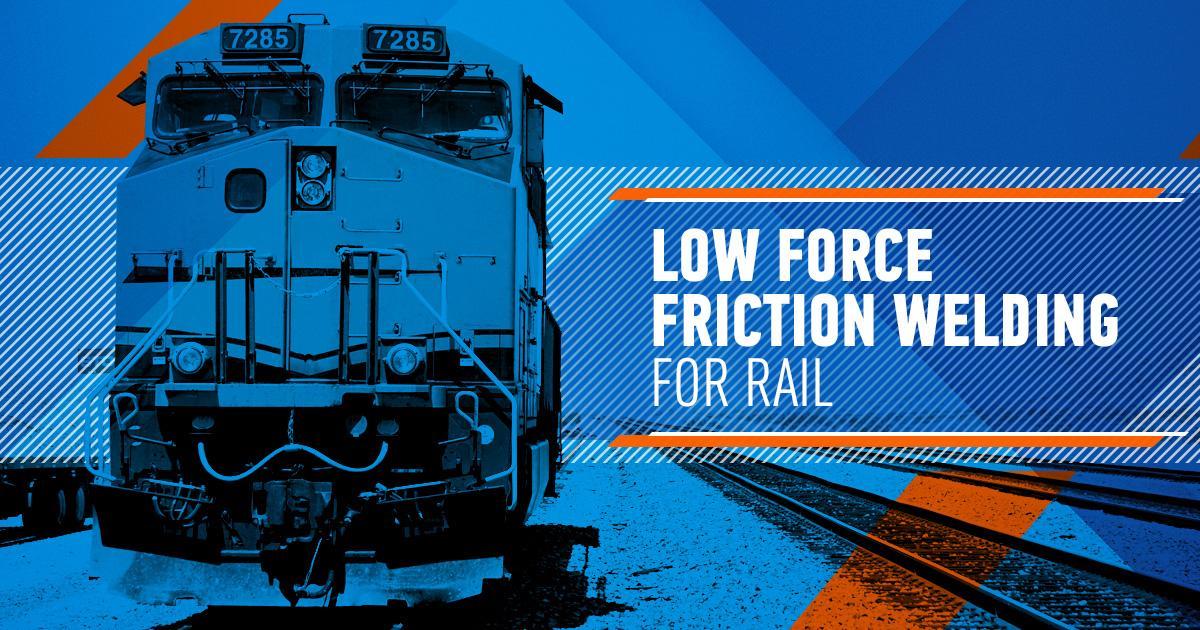
WELDING PROBLEMS THE RAIL INDUSTRY FACES TODAY
For decades, railroad companies have been welding 80-foot rails to form Continuous Welded Rails (CWRs) that span from 400 feet to several miles. To accomplish this, they’ve heavily relied on two forms of welding: thermite and flash-butt. However, despite the wide use of these two processes, a significant percentage of railroad failures are a result of low-quality welds.
Flash-butt welding joints provide a low-quality weld life of a maximum of 50 percent the life of the rail. This is because they present a wide Heat Affected Zone[1] (HAZ) in the weld joint and a low hardness in that HAZ compared to the rail steel. On the other hand, thermite welding is known for being less expensive than flash-butt welding, but this technique provides an even lower-quality weld, resulting in more fractures in the weld joint.
Because deficient welds are so prominent in this industry, railroad companies have started to take preventative measures and have been pushing rail manufacturers to provide longer rails from fixed facilities so there are fewer joints to repair.
EWI RESEARCHES A POTENTIAL SOLUTION
Several companies have been trying to solve this problem by developing methods to improve the weld quality. In response, EWI conducted research of Linear Friction Welding for joining rail, published by the Federal Railroad Administration (FRA.) The research found that Linear Friction Welding improves the quality of the rail weld.
“Our study concluded that welds that are near base material mechanical properties were created,” stated EWI Applications Engineer Seth Shira, author of the research. “Also, linear friction welding reduces the potential for forming inclusions, as its heat input and peak temperatures are lower than other processes that deal with molten material, like thermite and flash-butt welding.”
The future research recommended was an optimized form of Linear Friction Welding with high gradient pre-heating that promises to produce even higher quality welds with a very narrow HAZ.
“These improvements may also include shorter weld time, a reduction in burn-off and a hardness profile that will be more resistant to forming batter defects,” said Shira.
LOW FORCE FRICTION WELDING: A PROMISING SOLUTION FOR THE RAIL INDUSTRY
From there, with the support of EWI, Manufacturing Technology Inc., the global leader in friction welding solutions, applied the EWI research and developed Low Force Friction Welding. Low Force Friction Welding uses an external energy source to raise the interface temperature below the melting point of the two parts before applying friction.
Based on research and development performed by MTI for rail applications, Low Force Friction Welding offers the following benefits:
- Low Force Friction Welding provides a weld life closer to the life of the rail than any other technology in the market today. Because there is no melting in this process, the welds are expected to be stronger and last longer. Both thermite and flash-butt welding require the material to melt, leading to a weaker weld.
- MTI’s Low Force Friction Welding technique produces welds with a narrower HAZ and improved hardness profile than flash-butt and thermite welding
- Low Force Friction Welding has also proven to significantly reduce cycle times in certain rail applications.
If you’re ready to explore a new joining solution for your rails, put your trust in a company that has more than 300 years of combined friction welding and engineering experience.
MTI: A GLOBAL LEADER IN LOW FORCE FRICTION WELDING
Capitalizing on our renowned welding proficiency, MTI is the only organization that’s developed, designed and manufactured low-force friction production machines currently operating worldwide.
To discover if Low Force Friction Welding is right for your next rail project, contact me to get started on development work.
Simon Jones
Director of Aerospace - Low Force Friction Welding
jones.simon@mtiwelding.com
[1] . The area of the base material, which has not been melted, but has had its microstructure and properties altered from welding.
 MTI UK
MTI UK  FWT
FWT